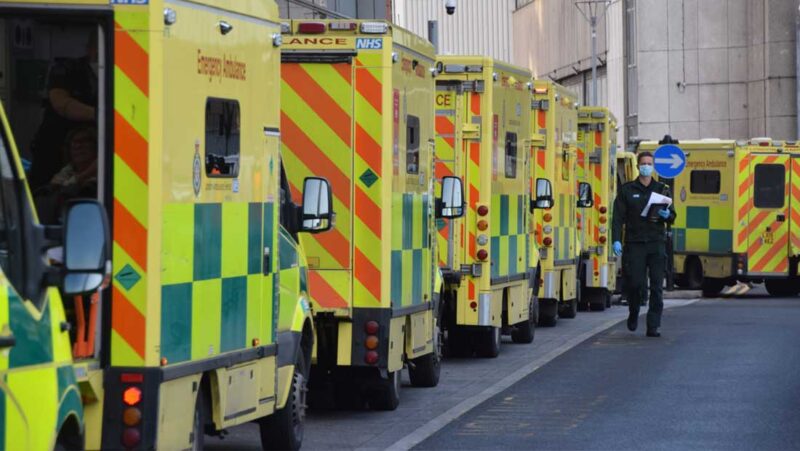What are Community Health Services?
Community Health Services (CHS) can be defined as diagnostic, therapeutic and preventative health services that are provided for individuals in the community either by staff directly employed by the NHS or by a non-NHS provider. My local Community Health Services underwent significant organisational change as part of the Transforming Community Services programme which plans to deliver more personalised care closer to home, and East Sussex Community Health Services integrated with the local acute Trust to form East Sussex Healthcare NHS Trust.
We are a small team providing pharmaceutical advice and support to community based services. This includes community nursing services, community therapy services and community clinics, with some specialist multi-disciplinary teams such as the frailty, community stroke, and crisis response teams, alongside community intermediate care bedded units.
Our primary role is to ensure the safe and appropriate use and management of medicines, from prescribing, through supply and administration, to monitoring and disposal. Although locally we don’t provide a service to children (such as immunisations) or prisons, these services are often supported by CHS teams. There is a much larger team at the acute sites, and we benefit from their expertise, such as easy access to Medicines Information services.
What is the role of a Community Health Services pharmacist?
The world of community health services is diverse. It has matured, responding to local needs, local services, and local visions for development. The diversity makes it difficult to provide a description of what a typical community health services pharmacist or team does.
Typically, the bedded units take up the majority of the team’s time. These patients are either step up (from home) or – more likely – step down from acute services. The national trajectory would be to increase step up use, avoiding admission and providing a local alternative to the acute hospital. These bedded units offer rehabilitation services, following a stroke or a hip fracture for example, respite care, and palliative care.
It’s about supporting the safe use of medicines outside of an acute hospital setting, whether that be in a community bedded unit or the patient’s own home
The medical model differs between our bedded units. Some have hospital doctors present, others have a short daily visit from a local GP on weekdays. The units are nurse and therapist led, and require a highly skilled team, especially in both the absence of a medical team and out of hours, to identify the deteriorating patient, and when an emergency doctor or ambulance is needed. If a patient has a cardiac arrest, they dial 999 as there is no resus team available. The CHS pharmacy team undertake medicines reconciliation for all new patients, arrange ongoing supplies and support a safe discharge process. This is a prime opportunity to undertake a medication review, often as part of a comprehensive geriatric assessment, as the patient may be with us for up to three weeks, allowing an incremental approach where needed.
A major role of the team is ensuring a safe supply of medicines to our services, whether that be patient-labelled or stock items. As we are an integrated Trust, we benefit from the pharmacy supply service from the acute sites, removing the need for a wholesaler dealer license, a home office license, and FMD processes. The legislation to allow supply of medicines by a different organisation, whether that be an acute trust or a community pharmacy, has become more complex over the past few years, making it very difficult to establish a robust supply chain that meets all legislative requirements. This is a major challenge for some community health services.
We also undertake a rolling programme of audits, reviewing the safe and secure handling of medicines in all our locations, which can range from an air-conditioned treatment room through to a cupboard in an office. We support the governance agenda for the clinical division, advising on aspects such as PGDs, policies, changes in practice, incident reporting and responses, and providing a pharmacy context for new initiatives and developments.
Do you work with other healthcare professionals?
Our district nursing teams provide a service to patients who are housebound. A large part of their work is around wound care or catheter care. However, there is a growing trend for administration of medicines, including IV antibiotics, in the patient’s home. Some of the prescriptions can be challenging, particularly when the prescriber is a hospital doctor who has discharged the patient with an unusual dose or frequency, or where there is inadequate supply. In a patient’s home there is no infusion pump, no medical team, maybe no phone signal, and possibly a dose that can’t be measured accurately. Most of my enquiries from community nursing teams relate to the safe administration of medicine, usually parenteral.
Some of the other community teams are very specific in their referral criteria, such as community podiatric services. Others have a broader range such as crisis response who provide a service to people over the age of 18 who are not necessarily housebound. Some of these teams were created to contribute to admission avoidance strategies to reduce footfall in the acute service, or to support a rapid or early discharge.
The community nursing teams include independent prescribers (nurse, pharmacist, physiotherapist and podiatrist), and community nurse prescribers. The pharmacy team provide advice to our prescribing colleagues and support audit processes and reviews of prescribing habits. Luckily, I share an office with our community TVN team, so I’m able to use their expertise to interpret some of the dressing prescriptions reported through ePACT. This review can be advising prescribers of the costs associated with their prescriptions (although this may be incidental to the patient’s need) or volumes, which is where my TVN colleagues can be so helpful.
Why do you love being a Community Health Services pharmacist?
It provides a different challenge every day and gives great job satisfaction. Fundamentally, it’s about supporting the safe use of medicines outside of an acute hospital setting, whether that be in a community bedded unit or the patient’s own home, working with a variety of clinical and support staff, both health and social care, to deliver care to the patient in the safest way.
The opinions expressed in this article are those of the author. They do not purport to reflect the opinions or views of the UKCPA or its members. We encourage readers to follow links and references to primary research papers and guidance.
Competing interest statement:
The author declares: no support from any organisation for the submitted work; no financial relationships with any organisations that might have an interest in the submitted work in the previous three years; no other relationships or activities that could appear to have influenced the submitted work.




